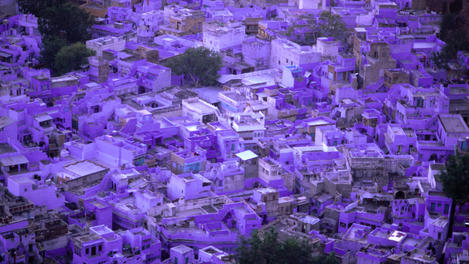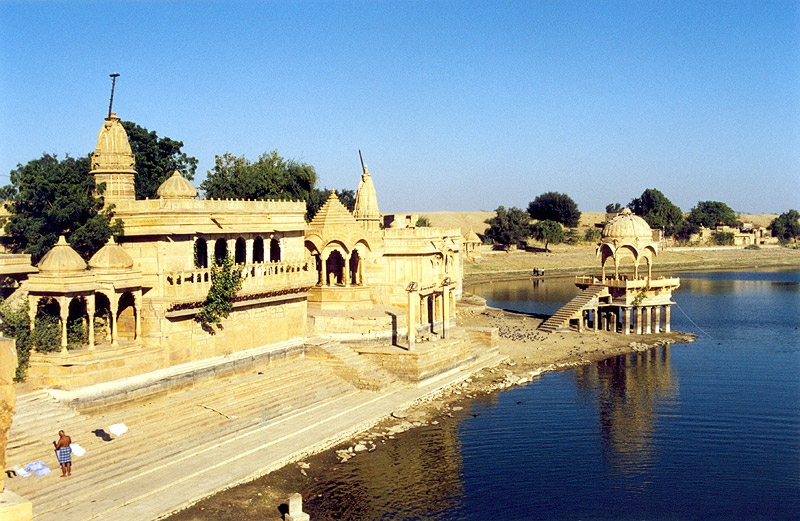
Jaisalmer
But Jaisalmer is in trouble. Overcrowding and poor drainage – coupled with devastating monsoons – have seen the fort sinking into Trikuta hill. Add to that the high hassle factor for camel safaris and your precious rupees, and the atmosphere is a touch strained. Yet Jaisalmer is still the stuff of legend – as the night sky spreads thick across the scrubs and dunes of the Great Thar Desert, most travellers will find themselves happily trapped in this exotic trade route town.
The town hosts the Desert Festival in February.
Last updated: Mar 2, 2009
Jodhpur

Looking down onto the blue-ish glow of Jodhpur city, from Meherangarh Fort, Rajasthan.

New Jodhpur is dirty and – bless those errant cows and those open sewers – smelly, but dive into the Brahmin-blue laneways of the old city to find boxes of snuff and boxed-cuff trousers (oh yes, the baggy-pants brigade started here!) bejewelled regalia and sensual spices – you name it, you can get it, half-price and giftwrapped. There’s hassle here too though, particularly around the clock tower, but it’s nothing a shopping expedition down Palace Rd, a foray into the nearby craft villages, or an excursion to the Mandore gardens can’t cure.
Jodhpur was founded in 1459 by Rao Jodha, a chief of the Rajput clan known as the Rathores, and the city grew out of the profits of opium, sandalwood, dates and copper. Rathore kingdom was once cheerily known as Marwar (the Land of Death), but today its moustached men are more about smiling for the camera.
In October, Jodhpur holds the Marwar Festival .
Last updated: Sep 16, 2008


0 comments:
Post a Comment